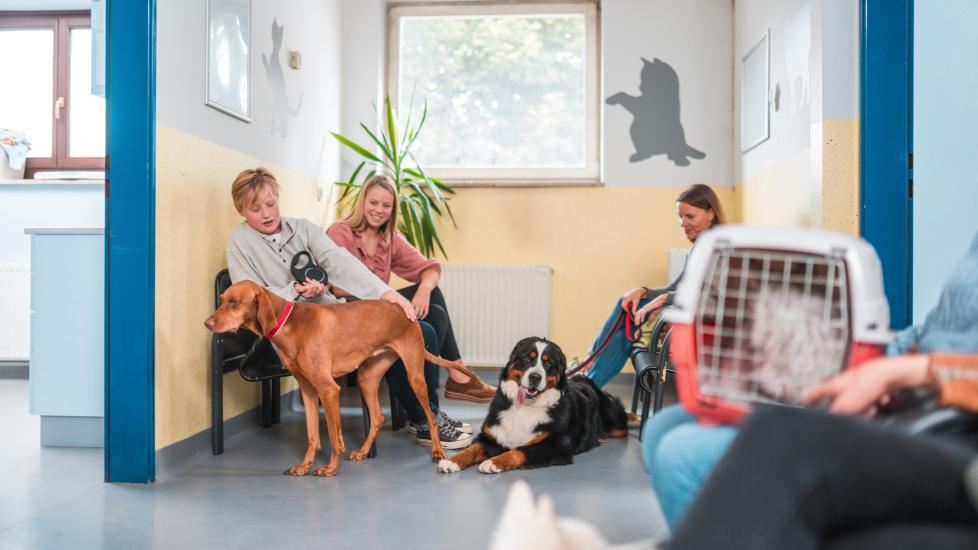What To Do in a Pet Emergency: 5 Key Steps
Emergencies with pets often happen at the most unexpected times. Injuries and sudden illnesses can be frightening for both you and your pet. Having an emergency plan in place will help to minimize some of the stress while getting your pet help as quickly as possible.
What Is a Pet Emergency?
If your pet is sick or hurt, they can’t tell you what happened, how bad they are feeling, or what is going on inside their bodies. Because of this, pet parents need to carefully watch any changes in their pet’s behavior and seek veterinary care if there is any doubt. Being proactive means you and your veterinary team can work together to catch problems early.
An emergency with your pet can be scary, but one way to lower stress is to know ahead of time where emergency veterinary care is available in your area.
By instinct, many pets (cats in particular) hide or mask illnesses. It is important to closely monitor any changes in behavior. They can indicate that your pet is sick and may need to see a veterinarian if they are not back to acting normal quickly.
Some other symptoms—such as bleeding, seizures, collapse, or changes in breathing—are more obvious signs that immediate care is needed.
Recommended Products
What To Do in a Pet Emergency
If you determine your pet is having an emergency, consider the following steps:
-
Remain calm.
-
Contact your family veterinarian or your nearest after-hours emergency facility.
-
Your pet will be scared and may be in pain. Use caution in moving them to avoid getting bitten.
-
Cats should be put in a carrier for safe transport.
-
Dogs should be on a leash with a snug-fitting collar or harness.
-
If your pet has ingested a toxin, try to gather all the information you can about the substance, the amount potentially ingested, and the time it was eaten. Bring the package if possible or take a photo of it.
-
Do not induce vomiting unless instructed by your veterinarian.
-
Bring a list or photo of any medications your pet takes on a regular basis.
When To Take Your Dog to an Emergency Vet
-
Trauma, such as an attack by another animal or coming into contact with a moving vehicle
-
Ingestion of a toxic food or substance
-
Increase in breathing rate or effort
-
Any vomiting or diarrhea in a puppy
-
Vomiting repeatedly or having multiple episodes of diarrhea in an adult dog
-
Retching repeatedly without producing any vomit
-
Blood in urine or straining to produce urine
-
Red, painful, or swollen eyes
-
A swollen or distended abdomen (this could be GDV in dogs, which is a life-threatening emergency)
-
Bites from snakes, wasps, or bees
-
Refusing to eat for more than 24 hours
-
Uncontrolled bleeding
-
Weakness
-
If your pet seems to be in too much pain to move or rest comfortably
-
Collapse or loss of consciousness
When To Take Your Cat to an Emergency Vet
-
Trauma, such as an attack by another animal or coming into contact with a moving vehicle
-
Ingestion of a toxic food or exposure to a toxic substance
-
Increase in breathing rate or effort
-
Red, painful, or swollen eyes
-
Any vomiting or diarrhea in a kitten
-
Vomiting repeatedly or having multiple episodes of diarrhea in an adult cat
-
Blood in urine or straining to produce urine
-
Uncontrolled bleeding
-
Pale gums
-
Weakness
-
If your pet seems to be in too much pain to move or rest comfortably
-
Collapse or loss of consciousness
Finding an Emergency Vet Near You
An emergency with your pet can be scary, but one way to lower stress is to know ahead of time where emergency veterinary care is available in your area. It is important to have a veterinarian who sees your pet annually for preventive care. If your emergency occurs during their business hours, many will be able to see your pet.
Ask your family veterinarian where to go if your pet needs help when they are unavailable, especially evenings or on a weekend or holiday. Save this information in your phone and post it on your refrigerator. If you have family members helping to care for your pet or pet sitters, make sure they have this information as well.
Keep the Pet Poison Helpline number available (855-764-7661), as a contact in your cellphone, in case you need quick advice about a potential toxin.
If you are traveling with your pet, make sure you check ahead of time where emergency veterinary care is available. In rural or remote areas, be aware that you may need to drive a long distance to find a veterinary hospital that is open after hours.
How Much Do Emergency Vets Cost?
In general, emergency care will be more expensive than daytime care. Costs vary widely depending on the region. It is important to think about the cost of emergency care before your pet needs it.
Often, pet insurance can help to offset emergency care costs. It’s important to have insurance before the need for care, as preexisting conditions are often not covered. If pet parents do not have insurance, other options include creating an emergency fund or getting a credit card to be used only for pet care.
Featured Image: Getty/AzmanL




